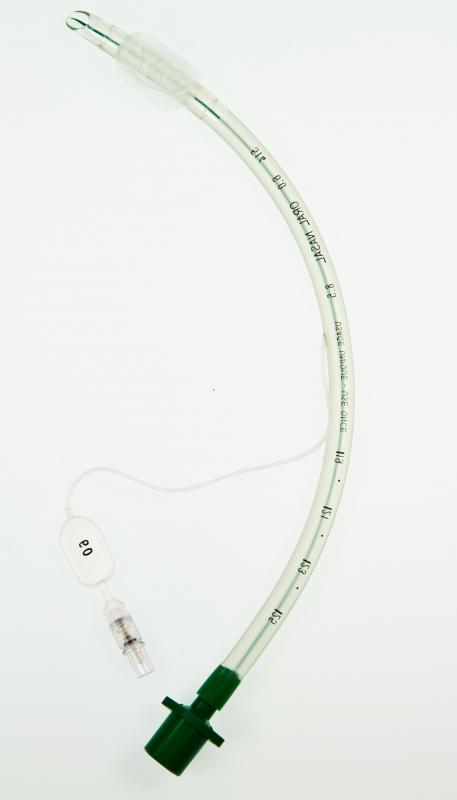At WiseGEEK, we're committed to delivering accurate, trustworthy information. Our expert-authored content is rigorously fact-checked and sourced from credible authorities. Discover how we uphold the highest standards in providing you with reliable knowledge.
What is a Capnograph?
A capnograph is a device that measures the amount of carbon dioxide in an air sample. It is most commonly used to monitor intensive care patients and patients under anesthesia. The device can also be used as a tool to diagnose respiratory problems and monitor patients in emergency response situations.
Carbon dioxide (CO2) absorbs infrared light. Infrared light is a type of light that has a wavelength longer than that of visible light. It can only be seen using special instruments. In order to measure carbon dioxide concentration in an air sample, a capnograph shines an infrared light through the sample. It then measures the light to find out how much has been absorbed by the CO2.

The results of this measurement are printed as a capnogram. A capnogram is a graph that plots readings from the capnograph over time. It may also plot the readings against the volume of air that has been inhaled or exhaled. During anesthesia, a capnograph takes its readings from the device that is delivering air to the patient. This can either be a respirator mask or a tube inserted directly into the patient's airway — called an endotracheal tube.

A capnograph is better than a human observer at knowing when something has gone wrong because it can recognize a change in CO2 before it builds up enough to cause visible symptoms. The device can detect most major respiratory problems, such as decreased breath frequency — also known as hypoventilation. It can also recognize when there is a problem with the way anesthesia equipment is being used, such as when a breathing tube has been inserted into the esophagus instead of the airway. Placement of a breathing tube in the esophagus can cause death if the mistake is not noticed quickly.
Many paramedics have begun using the capnograph as a patient monitoring tool before the patient ever reaches the hospital. In addition to making sure that an endotracheal tube has been placed correctly, capnographs can also tell if a patient is having difficulty breathing or is not getting enough air. This can help paramedics make better-informed choices about how to treat a patient.
The capnograph can also measure the effectiveness of cardiopulmonary resuscitation (CPR). It is better than other measuring devices because readings are not affected by the chest compressions. This means a paramedic does not have to stop CPR to tell if the CPR is helping the patient.
AS FEATURED ON:
AS FEATURED ON:












Discuss this Article
Post your comments